Alumni Profiles
Karen G. Johnston ’89
Position: Settled Minister at The Unitarian Society in East Brunswick, NJ
Major: Women & Gender Studies
How did Hamilton get you where you are today?
The Rev. Karen G. Johnston ’89 can trace her lifelong anti-racist activism to her time at Hamilton. During a theology class she learned about Emmett Till, the 14-year-old African American who was lynched in Mississippi in 1955.
“Thirty-three years after that lecture, I visited the communities that bear witness to this horrific act of violence to show the ugly truth we should not forget,” Johnston says. “I poured holy water from my congregation that marks where Till’s body washed up out of the Tallahatchie River.”
On a sabbatical from her ministry in East Brunswick, N.J., Johnston undertook a 17-day journey this spring to Louisiana, Mississippi, and Alabama through her connection with the Lost Souls Public Memorial Project. The Lost Souls of 1818 include 137 African Americans from New Jersey who, through deception, were stolen into slavery and sent to the Deep South by a slave ring headed by a corrupt Middlesex County judge. The project’s aim is to build a memorial to these community members.
Johnston visited sites in Louisiana likely associated with the Lost Souls, such as a town that began as a plantation owned by the brother-in-law of the corrupt judge, and Avery Island, which started as a plantation with enslaved laborers. Her pilgrimage also included points along the Civil Rights Trail in Alabama and Mississippi.
On the Hill, Johnston said she was the only women’s studies major in her class. She earned two master’s degrees: one from Smith College School for Social Work in 1995 and a master’s of divinity from Hartford International University for Religion and Peace and Andover Newton Theological School in 2016. She was ordained into the Unitarian Universalist ministry.
“I went on the pilgrimage because this nation’s ‘original sin’ is the twin violence of the genocide of indigenous peoples and the enslavement of Africans,” Johnston reflects. “We live in the wake and wash of these acts. It is in facing this challenging reality that collective liberation, alongside healing, emerges to create resilience and hope.”
Kirk Berlenbach ’91
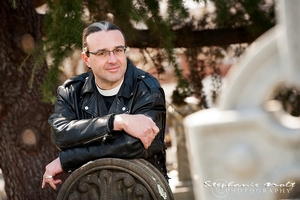 Position: Rector of Saint Timothy’s Episcopal Church, Philadelphia, Pa.
Position: Rector of Saint Timothy’s Episcopal Church, Philadelphia, Pa.
Major: Philosophy Major and Creative Writing Minor
How did Hamilton get you where you are today? Once I was at Princeton Seminary it was evident that Hamilton had prepared me well for the rigors of grad school. The emphasis on clear thinking and expression as well as the analytical foundation from my major enabled me to excel academically and allowed me to focus on the important work of my placements and internships.
What was your involvement in religious life when you were a student? While I always maintained a strong sense of my own spirituality I confess that after freshman year I was not regularly involved in any organized religious activities on campus. However I did take the spring semester of sophomore year off and went to live in a Christian community in Vancouver, BC which was dedicated to ministering to runaways and street kids.
Matthew Binkewicz ’86
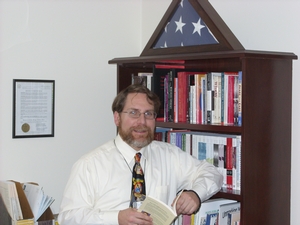 Positions: Pastoral Care Coordinator and Bereavement Counselor at Hospice of the Finger Lakes, Auburn, N.Y.
Positions: Pastoral Care Coordinator and Bereavement Counselor at Hospice of the Finger Lakes, Auburn, N.Y.
Pastor at St. George Orthodox Church, Lansing, N.Y.
Major: Biology and Russian Studies
How did Hamilton help you get where you are today? My time at Hamilton provided a more diverse educational foundation, that would eventually direct me to the ministry. Perhaps it was my time as a Marcy State Volunteer that was the catalyst. In the years 1983-1986, I lead a group of students who would drive to Marcy State Psychiatric Hospital once every two weeks, and we would simply visit with patients.
What was your involvement in religious life when you were a student? As an Orthodox Christian, there were no services on campus so I caught a ride with a faculty member’s wife who attended church in Herkimer, NY.
Mark Burnham ’83
 Position: Senior Pastor/Head of Staff and First Presbyterian Church, Asheville, N.C.
Position: Senior Pastor/Head of Staff and First Presbyterian Church, Asheville, N.C.
Major: Public Policy Major and History Minor
How did Hamilton get you where you are today? Hamilton helped prepare me academically for pursuing two graduate degrees—first in International Business and then a Masters of Divinity. My experience on the basketball team shaped my understanding of self-sacrifice and teamwork.
What was your involvement in religious life when you were a student? I must confess to little involvement in my religious life at Hamilton. It was a “time in the wilderness” before returning to the church in my late 20s.
Larry DeLong ’78
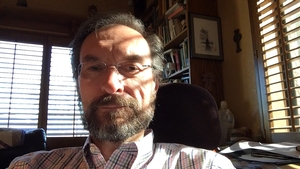 Position: Pastor/Head of Staff, Valley Presbyterian Church PC (USA), Green Valley, Ariz.
Position: Pastor/Head of Staff, Valley Presbyterian Church PC (USA), Green Valley, Ariz.
Major: Music
How did Hamilton get you where you are today? I came from a small town, resort community in northern New York, and expected college to be “13th Grade” since I’d glided through the previous twelve. Hamilton taught me to think reasonably well (you can only accomplish so much), social skills, confidence in myself. And, Alpha Delta Phi basically saved my life (true story!). But it was the whole package for which I am grateful and which led me to be such an intellectual omnivore: history, epidemiology, theology, developmental psychology, literature, poetry.
What was your involvement in religious life when you were a student? Almost none. Had had a very bad “born again” experience at the end of High School, and while I did take a New Testament class with Mel Endy and attended one Easter Vigil, the reason I was in church or Chapel was to sing. However, my call to ministry did occur during January term 1978.
Stephen Fuchs ’68
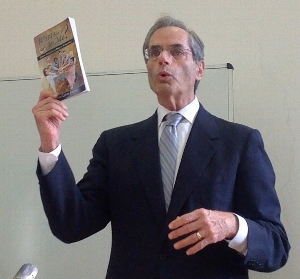
Positions:Rabbi Emeritus of congregation Beth Israel W. Hartford, CT
Former President of the World Union for Progressive Judaism
Author of What’s in It for Me? Finding Ourselves in Biblical Narratives
Major: Government
How did Hamilton help get you to where you are? At the time I was a student there was no Jewish life of any kind at Hamilton. The neo -Nazi George Lincoln Rockwell was brought in as a speaker. Some Hamilton students actually cheered him. It was a chilling moment. The Jewish vacuum compared to the warm Jewish home and synagogue where I grew up in East Orange, NJ really made me take a serious look at becoming a rabbi. Something was missing in those days from the atmosphere at Hamilton, and the vacuum taught me how precious that missing component was.
What was your involvement in religious life when you were a student? In my Junior year I had a car on campus. For some reason while other students were doing what students did/do on Friday nights, I found myself attending religious services regularly in Utica. Hamilton is very different today, as I recalled in the speech I gave in the Hamilton chapel on April 16, 2015 to commemorate the Holocaust and in the talks I gave as Scholar in Residence at Temple Emanu-El in Utica the following weekend. The changes in the 50 years since I arrived on the Hill are most welcome.
Charles Hambrick-Stowe ’70
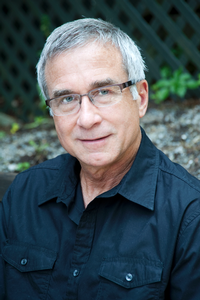 Position: Pastor and Historian and the First Congregational Church, Ridgefield, Conn.
Position: Pastor and Historian and the First Congregational Church, Ridgefield, Conn.
Major: Religion
How did Hamilton get you where you are today? My experience at Hamilton – especially courses in history, philosophy and religion, and writing – gave shape and focus to most of the questions that I have continued to pursue in my professional life as an academic historian and Christian minister. I credit the College for equipping me with the skills to develop what has become, in essence, a dual career.
What was your involvement in religious life when you were a student? Apart from occasional attendance at chapel worship, I was not very much involved in campus religious life. It was religion courses that awakened my thinking and ignited my passion to continue with the study of theology and the history of religious experience.
Jace Kahn ’63
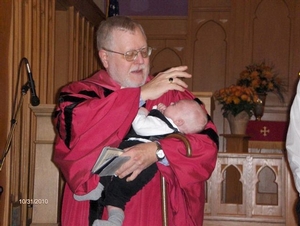 Position: Retired Unitarian Universalist minister
Position: Retired Unitarian Universalist minister
Major: Modern Languages
How did Hamilton get you where you are today? I took history of Western Religious Thought to satisfy the distribution requirement and found Professor Williams very persuasive.
What was your involvement in religious life when you were a student? When I was a student at Hamilton, chapel attendance was, essentially mandatory and the administration took seriously the matter of obtaining the most prominent preachers. A friend used to describe the worship environment as “high church Presbyterian.”
Anne Mason ’82
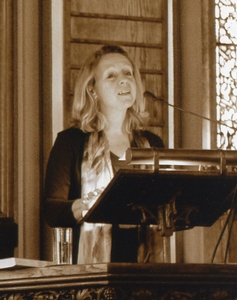 Position: Minister at the Unitarian Universalist Church of Lancaster, Pa.
Position: Minister at the Unitarian Universalist Church of Lancaster, Pa.
Major: Comparative Literature
How did Hamilton get you where you are today? Hamilton was very helpful in teaching me how to write. In my graduate work at Lancaster Theological Seminary I also used my Comparative literature skills of critical analysis. Much of my work as a preacher is in learning to express my thoughts clearly as I am in conversation with many sources and work to clarify and simplify my language so that it is effective in the pulpit.
What was your involvement in religious life when you were a student? I sang in the chapel choir, but was not a regular worship service attendee. However, I took Chinese Religion and Philosophy as well as Islamic Thought and TIme, Space and Power. and these courses were hugely important in my training as a Unitarian Universalist because of our appreciation for all world religions.
Cindy Maybeck ’83
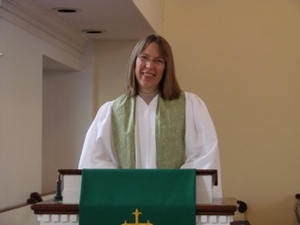 Position: Founder of “Spirit Story,” which designs original presentations blending biblical storytelling and personal stories, in Shrewsbury, Mass.
Position: Founder of “Spirit Story,” which designs original presentations blending biblical storytelling and personal stories, in Shrewsbury, Mass.
Major: English
How did Hamilton get you where you are today? Hamilton taught me to think critically, to speak persuasively and to write articulately. There is a graceful intelligence evident in my ministry, thanks in part to Hamilton. Also, my experience on stage in theatre productions taught me skills I use in ministry today.
What was your involvement in religious life when you were a student? I attended Hamilton College Chapel services and my grandmother brought me to First Baptist Church in Hamilton, NY whenever I visited her on a weekend.
Todd Monsell ’98
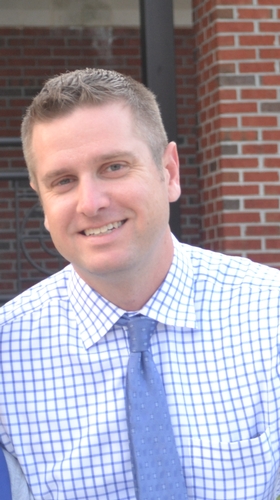 Positions: Lower School Music Teacher / Choir Director at Porter-Gaud School, Charleston, S.C.
Positions: Lower School Music Teacher / Choir Director at Porter-Gaud School, Charleston, S.C.
Director of Music at St. John’s Lutheran Church
Major: English and Music minor
How did Hamilton get you where you are today? Hamilton nurtured my love of music and gave me myriad many chances to perform (choir, Hamiltones, voice and organ recitals, etc). While I loved my English literature classes, I'm still not sure why I didn't major in music! I taught ESL for several years after graduation in Japan, France and the U.S. before going to graduate school at the University of New Hampshire for music education.
What was your involvement in religious life when you were a student? My involvement in religious life on campus was nonexistent because I always held church organist jobs at off-campus churches.
Sue Morgan ’72
Positions: Lay Associate for Pastoral Care at All Saints Episcopal Church, Glen Rock, N.J.
Chair of the Commission on the Laity in the Episcopal Diocese of Newark
Major: History
How did Hamilton get you where you are today? Although I do not think Hamilton much influenced my desire to go to seminary or become a lay minister, I remember a Religious Studies class on the New Testament that got me thinking about the New Testament in a new way.
What was your involvement in religious life when you were a student? I did try and attend services at St. James Episcopal Church in Clinton while I was a first year student, but as I had no access to a car, it was a bit daunting to walk all that way into town.
Emily Murphy ’12
 Position: Campus Staff Member with Intervarsity Christian Fellowship at Columbus State Community College and Ohio State University in Columbus, Ohio
Position: Campus Staff Member with Intervarsity Christian Fellowship at Columbus State Community College and Ohio State University in Columbus, Ohio
Major: Hispanic Studies
How did Hamilton get you where you are today? Hamilton was the place where I learned not just to think critically about my faith, but also to experience God in the midst of uncertainty. I came in with very little idea of what I believed apart from the culture of my childhood, but I left knowing I had encountered God and I was excited about the ways He's healing pain and restoring justice to the world.
What was your involvement in religious life when you were a student? As a student, I was the InterVarsity Large Group coordinator and president of the chapter.
Meg Newswanger ’86
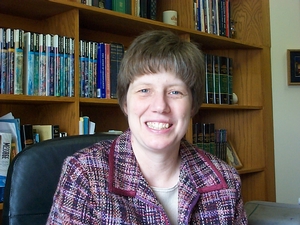 Position: Pastor of the First Presbyterian Church of Maple Plain, Maple Plain, Minn.
Position: Pastor of the First Presbyterian Church of Maple Plain, Maple Plain, Minn.
Major: Government
How did Hamilton get you where you are today? Hamilton taught me to think deeply and broadly. I learned to question assumptions, and see connections. Of course, I also learned to communicate. The ability to express complex thoughts clearly and concisely is the single greatest benefit of my Hamilton education.
What was your involvement in religious life when you were a student? I was not involved in any kind of organized religious life when I was at Hamilton. Looking back, I can see the steps of my journey that led to where I am, some of which happened at Hamilton, but none were shaped by any intentional religious practice except one. My junior year some friends convinced me to attend the Christmas Eve mass that Fr. John Crogan held each year during the December reading period. The homily that evening was life changing for me, though it took years before it bore any visible fruit.
Peter Nord ’70
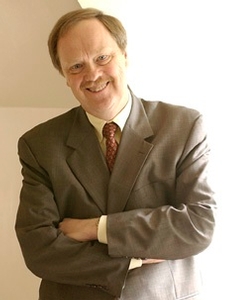 Position: Coordinator of the Urban Presbytery Network and Presbytery Leader Formation Program in Grand Rapids, Mich. and Vero Beach, Fla.
Position: Coordinator of the Urban Presbytery Network and Presbytery Leader Formation Program in Grand Rapids, Mich. and Vero Beach, Fla.
Major: Religion
How did Hamilton get you where you are today? Hamilton’s gifts to me were a liberal arts education, civic engagement (anti-war protests, earth day and chapel board), critical thinking, exposure to students who had high aspirations and who came from families who were leaders in their professions, four years of speech, and concentration on writing were all valuable in my development. My courses in religion and history of science also gave me a base of knowledge that most people in my profession did not have. Being in a very demanding academic environment prepared me to confront significant challenges with persistence.
What was your involvement in religious life when you were a student? I served as chair of the Chapel Board 1968-1970. I was President of InterVarsity Christian Fellowship for a year (no one else would do it and, as someone who is progressive, I was an anomaly). We had good debates and it taught me how to relate well with people with whom I did not agree.
Hannah Grace O'Connell ’13
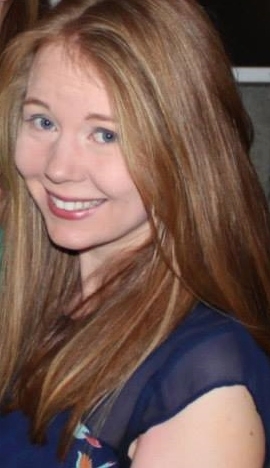 Position: Development and Communications Associate at First Presbyterian Church, New York City
Position: Development and Communications Associate at First Presbyterian Church, New York City
Major: Religious Studies and Sociology
How did Hamilton get you where you are today? The Religious Studies department played a huge role in guiding me towards my first job. The department helped me direct my own coursework and research projects to focus on modern, lived religious life. My interest in religion as social and communal institutions was a huge factor in leading me to decide to work at First Presbyterian. I was interested in non-profit development work, but found that my academic background gave me an added advantage/understanding once I started working in a specifically “religious non-profit.” My background in Religious Studies gives me both a shared language with these religious institutions, and the theoretical background of how congregations function - and these are things I apply to day-to-day work here.
Bob Patton ’59
 Position: Teaching missions at Crown College of the Bible and working with international students from the University of Tennessee and return to Suriname
Position: Teaching missions at Crown College of the Bible and working with international students from the University of Tennessee and return to Suriname
Major: Biology-Chemistry, Minors in Philosophy and Anthropology
How did Hamilton get you where you are today? I cannot really say that Hamilton led me to ministry, but that is not the fault of Hamilton per se; it was due to my own self-centered nature prior to salvation. Hamilton was, on the other hand, instrumental in my getting into medical school by giving me an excellent science background as well as Hamilton’s reputation for pre-med. And it was during my time as Professor of Medicine in Liberia that I accepted the Lord.
What was your involvement in religious life when you were a student? I attended chapel regularly and often went to church with my future wife during my last 2 years at Hamilton, but was not really involved much otherwise.
Stephanie Peddicord ’00
Position: President of Peddicord Consulting, LLC. I am currently serving as Interim Executive Director for one client, the Center for FaithJustice in Lawrenceville, NJ.
Major: Spanish (Honors)
How did Hamilton get you where you are today? Hamilton had a tremendous influence on my professional life and career. As a student, I was constantly challenged to think critically and communicate succinctly. I suffered a lot of “C”s and red ink in order to become the writer and communicator I am today. I attribute this in a significant way to Hamilton's general academic rigor and the writing intensive curriculum in particular.
What was your involvement in religious life when you were a student? Next to none, if I'm being honest. I arrived at Hamilton with a conviction of remaining true to my faith practice, but very rarely attended Mass. Instead, I found myself questioning a lot during those years. I attribute that in no small way to the incredible faculty, who were quick to challenge me on issues of faith and values. I now see in hindsight that kind of discernment (“What does it mean to be a young person of faith in relation to an increasingly diverse world?” “What do I really believe as opposed to what has been passed down to me by way of tradition?”) is pretty common among that age group. As an adult, I recognize that those years of doubt really served to solidify me as a practicing Catholic committed to social justice. And, today, I practice by choice, not because I've been told to do so by others.
Barbara Purinton ’71
 Position: Transitional Pastor United Church of Bakersfield and Fairfield in Bakersfield, Vermont
Position: Transitional Pastor United Church of Bakersfield and Fairfield in Bakersfield, Vermont
Major: Government
How did Hamilton get you where you are today? I learned to trust my interests even if it meant that I was often the first woman in a number of contexts: from my classes at Hamilton where I was the first, and often only, woman, to the Semester in Washington in the fall of 1970. I was encouraged by my government professors at Hamilton to take that semester and it gave me an opportunity to live in Washington and experience learning in a new dimension. Kirkland too, encouraged me to live in uncharted territory, and figure out how to do things that had not been done before. I later went on to seminary and the ministry where again I was in the minority for many years. I have continued to learn, earning a Doctor of Ministry after my Masters of Divinity, and just recently, an MFA in Creative Writing.
What was your involvement in religious life when you were a student? Interestingly, not much at college, though I stayed connected to my Quaker Meeting in Philadelphia, where I was raised in the Society of Friends, and continued to develop my search for meaning in those unsettled college years in the late sixties and early seventies. I attended the larger chapel meetings.
Bruce Rockwell ’65
 Position: Assistant to the Bishop for Stewardship in the Episcopal Diocese of Western Massachusetts
Position: Assistant to the Bishop for Stewardship in the Episcopal Diocese of Western Massachusetts
Major: Government
How did Hamilton get you where you are today? Most importantly, Hamilton prepared me as a public speaker. Much of my work in stewardship formation involves speaking to groups, whether it involves preaching lay sermons or leading stewardship formation workshops. Without the training I received in public speaking at Hamilton, I would not be doing this ministry work.
What was your involvement in religious life when you were a student? When I was on the Hill, Hamilton had a mandatory chapel requirement that one could fulfill by attending worship services elsewhere. I worshiped regularly at St. James’ Episcopal Church in Clinton, even teaching Sunday school one year.
Dan Rosenfeld ’82
 Position: Cantor at Temple Beth Am - a Reform Jewish congregation - in Merrick and Bellmore, N.Y.
Position: Cantor at Temple Beth Am - a Reform Jewish congregation - in Merrick and Bellmore, N.Y.
Major: Music, with undeclared English and Russian Minors
How did Hamilton get you where you are today? My musical education at Hamilton has proven to be invaluable in every musical endeavor since I graduated because of my private voice study with JoElyn Wakefield Wright, my experience singing in the Hamilton College Choir and College Hill Singers, and the thorough education I received in Music Theory. In addition, my experience writing for the Spectator aided me greatly in all of the articles and publications I have submitted on a regular basis to synagogue newsletters and local publications.
What was your involvement in religious life when you were a student? It was at Hamilton that I became religiously active for the first time in my life. I attended and participated in all of the functions and holiday services of the Hamilton Jewish students' organization under the direction of Professor Peter Zaas at the time. For many years after I graduated, I returned to lead the Kol Nidre for Yom Kippur Evening services under the direction of Professor Heidi Ravven.
Suzanne Semmes ’71
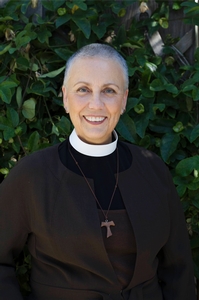 Position: Chaplain on staff at Dignity Health/Dominican Hospital, Santa Cruz, Calif.
Position: Chaplain on staff at Dignity Health/Dominican Hospital, Santa Cruz, Calif.
Major: English and American Literature
How did Hamilton get you where you are today? Wonderful academics there helped me improve my writing and fostered a lifelong love of Art History, which was useful in my first graduate degree (MALS, Dartmouth College, 1998).
What was your involvement in religious life when you were a student? I attended chapel, and sang in the Choir/Glee Club. I also took Religion 1.
Emily Sensenbach-Gopa ’01
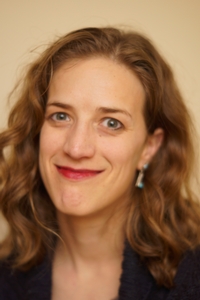 Positions: Director of Music and Organist at St. Paul’s Church in Milltown, N.J.
Positions: Director of Music and Organist at St. Paul’s Church in Milltown, N.J.
Music Director, Queens Choral of Rutgers University, New Brunswick, N.J.
Major: Biology
How did Hamilton get you where you are today? At Hamilton, I studied conducting with G. Roberts Kolb and organ with Steve Best. With the encouragement of Jeff McArn, I started a choir for Community Chapel services. After graduation I did graduate work in biology, but a liberal arts background made a career change toward sacred music a lot less scary than it might have been. And an alumni connection helped me get my current church job!
What was your involvement in religious life when you were a student? I was an active participant in Community Chapel and Intervarsity Christian Fellowship. I came to campus as a Christian, but Hamilton's spirit of inquisitiveness helped me in my faith, and I learned a lot about the importance of community.
Eve Stevens ’09
 Position: Parish Minister of the Unitarian Universalist Church of Utica, N.Y.
Position: Parish Minister of the Unitarian Universalist Church of Utica, N.Y.
Major: History
How did Hamilton get you where you are today? In Professor Ambrose’s class “US Religion and Slavery,” I spent all of Christmas break reading about Theodore Parker for a paper and feeling closer to and more energized by my faith than I had in a long time. I learned during my history classes at Hamilton about Buddhism, Taoism, the Russian Orthodox Church schism of 1666 and the historical Jesus. All of this fed my curiosity about theology and religious history and helped motivate me to attend seminary. My four years on the swim team and my one season playing rugby reinforced how much I love being part of a team working toward a common goal, which is really what ministry is about. When I attended Rainbow Alliance meetings at Hamilton, I began the process of committing to LGBTQ justice, which continues to be a strong theme in my ministry. At Hamilton, I also enjoyed taking theater classes with Mark Cryer, and often when I am preaching I think about lessons Mark taught me, especially “don’t apologize, go all in without fear of failure.”
What was your involvement in religious life when you were a student? While I was at Hamilton we had a small Unitarian Universalist student group who met on the third floor of the chapel on occasion to eat cider donuts and catch up with one another. I enjoyed theological conversations with our chaplain, Jeff McArn and always felt he supported my spiritual development. I attended the church that I now serve from time to time in college and enjoyed interfaith opportunities like the Seder and Eid dinners that had campus-wide invites.
Sandy Webb ’05
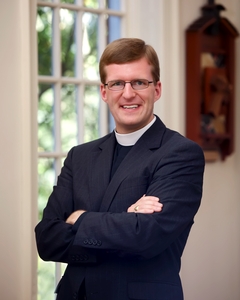 Position: Priest-in-Charge at Church of the Holy Communion in Memphis, Tenn.
Position: Priest-in-Charge at Church of the Holy Communion in Memphis, Tenn.
Major: Government (Honors) and Economics
How did Hamilton get you where you are today? Hamilton taught me to think and question; faith provided the answers. Hamilton taught me to speak and write; the church provided people to inspire.
What was your involvement in religious life when you were a student? Though it was a long (and often snowy!) walk, my spiritual home was St. James’ Episcopal Church in Clinton Village. On the Hill, Father Croghan and Chaplain McArn always made me feel so welcome, so loved, so encouraged on my journey to ordained ministry.
Russ Zacek ’97
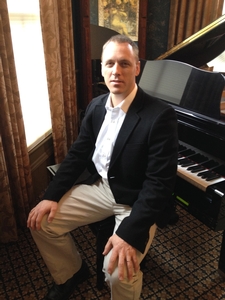 Position: Children’s Pastor at Church Alive in Fuquay Varina, N.C.
Position: Children’s Pastor at Church Alive in Fuquay Varina, N.C.
Major: Creative Writing
How did Hamilton get you where you are today? My experiences at Hamilton helped me to hone my creative gifts. The classes taught me how to communicate clearly and powerfully. The culture and student life experience challenged me to become aligned and consistent as a Christ follower. My core studies in the arts and theatre classes have been very useful in teaching and communicating with children.
What was your involvement in religious life when you were a student? When I was a student, I served on the worship team and in youth ministry at a local church in Clinton – Resurrection Assembly of God. I led a prayer group on the Hamilton football team that met and prayed before football games.
Paul Zaphiriou ’73
 Positions: Vicar of Hope Church Islington in London, an inner city Anglican parish with two church sites: St Mary Magdalene and St David
Positions: Vicar of Hope Church Islington in London, an inner city Anglican parish with two church sites: St Mary Magdalene and St David
Bishop of London's Advisor on Corporate Social Responsibility
Major: English and Economics
How did Hamilton get you where you are today? Hamilton was a wonderfully rewarding and enriching place in which to learn and mature. I found it encouraged far more breadth of enquiry and study than the narrower focus of the Oxford PPE curriculum. Kirkland, then a separate college with an adventurous teaching program, added further strength to Hamilton's profile. Hamilton helped me explore studies in areas I would have otherwise been unable to approach, encouraged me to explore the unexpected and stretched me, making me aim for targets I might have otherwise considered unattainable. Our motto - know yourself - accurately reflects what became my experience.
What was your involvement in religious life when you were a student? I was not involved in religious life at Hamilton. At the time I was nominally Greek Orthodox but non-practising. So I did not participate in any specific Chapel activities at Hamilton other than seasonal carol services at Christmas. My faith only came alive much later, in 1998! Yet I believe that it was my time at Hamilton, encouraging me to welcome difference in culture and in national narratives, that laid foundations for me to be open to ordained ministry in a context other than Greek Orthodox and that therefore helped me end up where I am today!
Contact
Contact Name
Dean of Students
Vice President and Dean of Students
